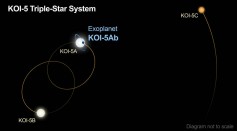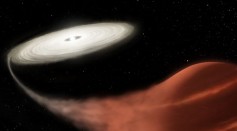Kepler
Supernova Blast Captured: Kepler Space Telescope Reveals the Groundbreaking Data It Recorded 3 Years Ago
Drastically Shrinking Planets Offer Hints Behind Mystery of Missing Worlds

Kepler Finds Triple-Star System With a Skewed Configuration

Kepler Discovers a White and Brown Dwarf Star Binary Pair That Gives off a Rare Outburst Event
Kepler’s SpaceCraft Keeps On Finding New Planets
Most Popular

Study Reveals High Turnover in Scientific Research Careers: What This Means for Future Scientists

How Technology Is Changing the Real Estate Industry?

How a Plant-Based Diet Can Protect Against Breast Cancer: Insights from Nutrition Research

Practical Steps to Future-Proof Your Money to Create Financial Security





